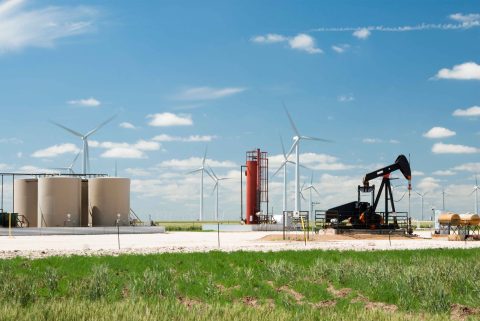Infrastructure
Making The Jump To Off-Grid: A Growing Trend For South Africans
Typically consumers of power are connected to a central supplier of electricity. In South Africa this supplier has been, and still is to a large extent, the state utility Eskom. However, the production of own electricity could, apart from supplying the consumer need, also supplement the Eskom grid.
Three ways to become less dependent on Eskom
In the first instance the connection to the grid is called a grid-tied solution, where the production of solar electricity can also feed electricity into the Eskom grid. In this way Eskom could get electricity from many decentralised producers.
In Germany these producers were encouraged to participate with a provision of a feed-in tariff. This option worked so well that today German citizens have many solar photovoltaic (PV) roofs and the tariff is no longer needed.
As a matter of fact, if we had the same amount of solar panel capacity in South Africa that the Germans had installed, we would have double the capacity of electricity that Eskom currently supplies. This is thanks to double the solar radiation that we have in South Africa when compared to Germany. This means that 1m2 of PV in South Africa can produce double the electricity of the same in Germany.
Secondly, a connection could also be a hybrid solution, in which case the connection gives the consumer various choices in terms of using the grid.
Typically a hybrid solution is used to lower the demand on Eskom – solar installation provides sufficient electricity for consumers’ needs.
This solution can be set to feed the grid with energy from consumers’ solar panels (if allowed) or not feed the grid at all.
Thirdly, if battery storage is added to the system, the system can be set to use electricity from the grid or not to replenish battery energy. One can also choose to power the facility using the battery option only, for instance at night, and let the sun recharge the battery the next day and use the grid only as a back-up or at peaks.
The term off-grid refers to a consumer who is not connected to the grid at all. This installation typically includes battery storage of the size that could power the facility at all times of low or no sunshine. Due to the size of the battery required, this system is typically the most expensive and is less popular.
Ease of transition
Technology advances, availability of components, and especially price reductions, have made it relatively easy to move away from Eskom and become more or even completely independent of the Eskom grid connection. Apart from this technology becoming significantly more affordable in recent years, banks remain keen to offer loans to finance off-grid installations.
Due to the increase in power supply uncertainties and availability, the demand for alternative power options has increased proportionally with various suppliers and installers now competing for new business opportunities created by constrained power supply from Eskom.
It has certainly become reasonably simple to make the transition to off-grid – either in part or completely.
Where does the idea to be off-grid come from?
Where customers have a need that is not being met, they will actively seek a solution to meet the need.
According to Petra Sundström, head of digital business development, crushing and screening at Sandvik, “Technology by itself is not the disruptor. Not being customer-centric is the biggest threat to any business.”
The population looks up to the people they have put in a position to lead and govern for guidance and support.
They trust and expect that the same government would provide for their safety, and supply basic services like shelter, water and energy, so that they need not provide these services by themselves.
It is tough enough trying to find a job, build a business and provide for your family and, of course, pay for the basic services needed in life. It is government’s responsibility to make these services available at the lowest cost possible for consumers. This is fair, given that people pay taxes in order to have these services.
When the above fails due to interruption of the service or the cost of the service becoming too high, consumers are compelled to seek alternative options, failing which they are forced to live without the required service.
Given the challenges associated with interrupted electricity supply, consumers continue to seek ways of becoming self-sufficient or other entities willing to provide the service. When Eskom started to fail in providing sufficient electricity to its customers in 2008, consumers began making emergency plans to ensure they stayed in business.
Recently the problems at Eskom resulted in many and repeated load-shedding events (such as rolling blackouts) and for many consumers this was the last straw.
Technology advances and price reductions in the renewable energy field have made the move away from the Eskom grid connection easier.
Businesses and individuals continue to install PV panels on their roofs to generate their own electricity. This is not too difficult, and in many instances lowers the cost of electricity during the day, when the sun is shining.
Should sunshine be unavailable, the consumer could fall back on the Eskom supply via the grid connection or use a standby generator or solar energy previously stored in a battery.
Once an emergency measure, generating one’s own electricity has today became a trend with many households and businesses alike making the jump to off-grid to ensure trusted electricity supply.
It is anticipated that in future the supply of electricity will be sourced from many decentralised producers/consumers all sharing one big storage facility.







 Sign-up and receive the Business Media MAGS newsletter OR SA Mining newsletter straight to your inbox.
Sign-up and receive the Business Media MAGS newsletter OR SA Mining newsletter straight to your inbox.